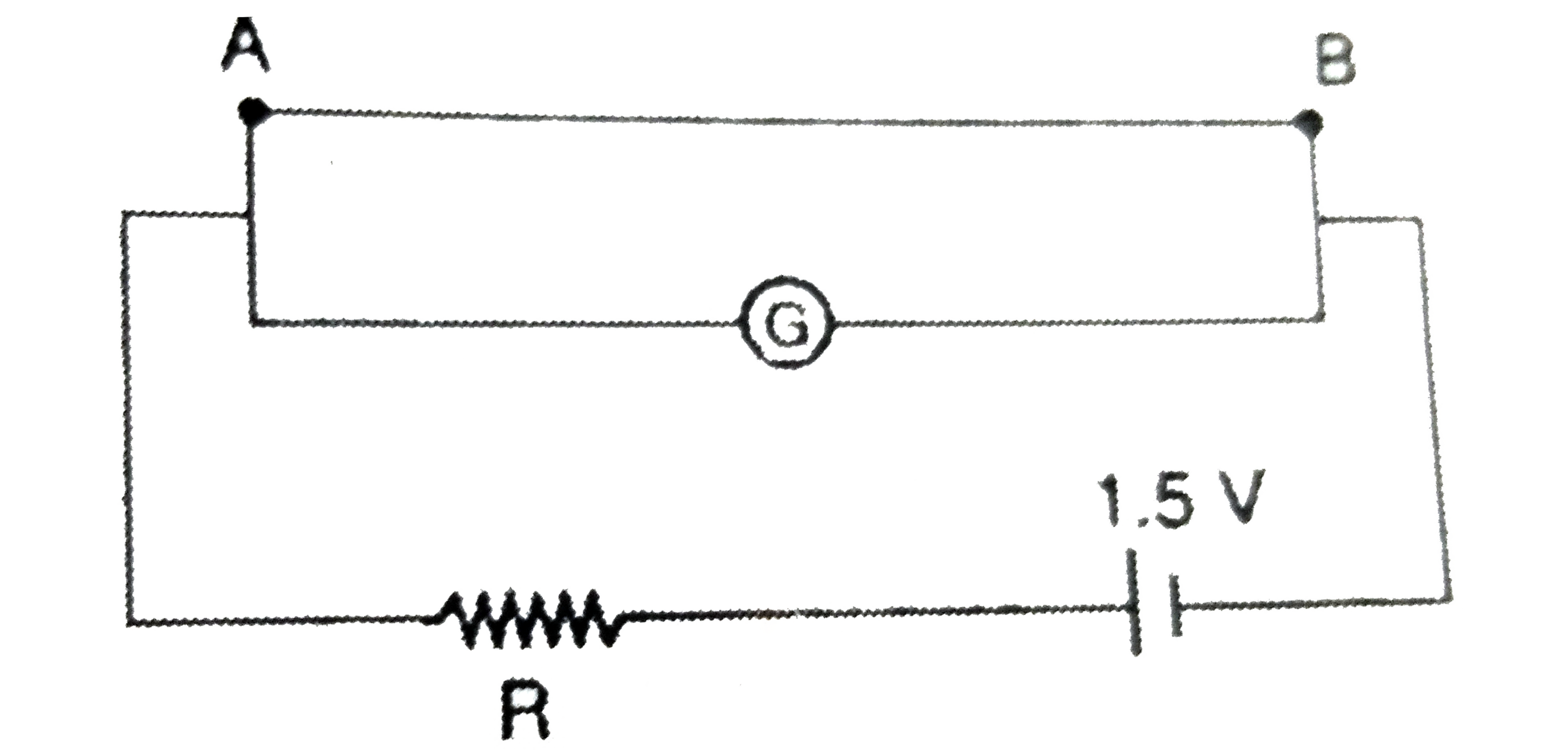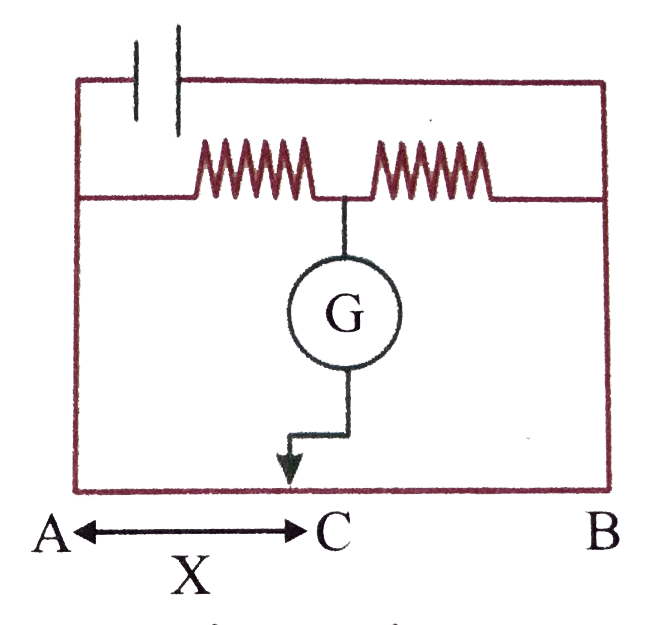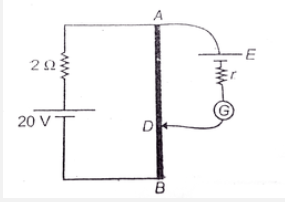In the adjacent circuit a resisttance R is used. Initially with 'wire AB' not in the circuit, the galavanometer shhows a deflection of d divisions. Now, the wire AB is conneted parallel to the galvanometer and the galvanometer shows a deflection defiction nearly d/2 divisions. Therefore

A. R=G
B. R<<G
C. R>>G
D. R=SGS+G
The correct Answer is:C
Step by step video & image solution for In the adjacent circuit a resisttance R is used. Initially with 'wire AB' not in the circuit, the galavanometer shhows a deflection of d divisions. Now, the wire AB is conneted parallel to the galvanometer and the galvanometer shows a deflection defiction nearly d/2 divisions. Therefore by Physics experts to help you in doubts & scoring excellent marks in Class 12 exams.
Updated on:21/07/2023Topper's Solved these Questions
- CURRENT ELECTRICITYBOOK - RESONANCE ENGLISHCHAPTER - CURRENT ELECTRICITYEXERCISE - Exrcies-3(PART-1)
22 Videos
- CURRENT ELECTRICITYBOOK - RESONANCE ENGLISHCHAPTER - CURRENT ELECTRICITYEXERCISE - Exrcies-3(PART-2)
23 Videos
- CURRENT ELECTRICITYBOOK - RESONANCE ENGLISHCHAPTER - CURRENT ELECTRICITYEXERCISE - Exercise-2 (Part-3)
22 Videos
- COMMUNICATION SYSTEMSBOOK - RESONANCE ENGLISHCHAPTER - COMMUNICATION SYSTEMSEXERCISE - Exercise 3
13 Videos
- DAILY PRACTICE PROBLEMBOOK - RESONANCE ENGLISHCHAPTER - DAILY PRACTICE PROBLEMEXERCISE - DPP.No.71
1 Videos
Similar Questions
In the circuit, the galvanometer G shows zero deflection. If the batteries A and b have negligible internal resistance, the value of the resistor R will be -

View SolutionIn the circuits shown in the figures, the galvanometers show no deflection. Find the ratio of R1 and R2.

View SolutionIn the given circuit, no current is passing through the galvanometer. If the cross sectional diameter of the wire AB is doubled, then for null point of galvanometer, the value of AC would be:

View SolutionIn the circuit, given figure below the length of the wire AB = 400 cm. Where should the jockey J be placed, so that the galvanometer shows a zero deflection?
View SolutionThe potentiometer wire AB shown in figure is 40 cm long. Where should the free end of the galvanometer be connected on AB so that the galvanometer may show zero deflection?

View SolutionThe potentiometer wire AB shown in figure is 40cm long. Where the free end of the galvanometer should be connected on AB so that the galvanometer may show zero deflection?

View SolutionIn the potentiometer circuit shown the galvanometer shows no deflection for AD = 35 cm. The resistance of wire AB is 18 Ω and its length is 50 cm . Calculate the emf E of the cell

View SolutionThe following combination are concerned with experiments of the characterization and use of a moving coil galvanometer.
The series combination of variab resistance R, one 100Ω resistor and moving coil galvanometer is connected to a mobile phone charger having negligible internal resistance. The zero of the galvanometer lies the centre and the pointer can move 30 division full scale on either side depending on the directin of current. The reading of the galvanometer is 10 divisions and the voltages across the galvanometer and 100Ω resistor are respectively 12mV and 16 mV.
The series combination of the galvanometer with a resistnce of R is conneted across an ideal voltage supply of 12 V and this time the galvanometer shows full scale defiention of 30 divisions.
The value of R is nearly
View SolutionIn the circuit shown, the length of AB is 100 cm. The lengthj1 for which the galvanometer shows zero deflection is __________ cm.

View SolutionA nichrome wire AB, 100 cm long and of uniform cross section cross section is mounted on a meter scale the points A and B coinciding with 0 cm and 100 cm marks respectively. The wire has a resistance S = 50 ohm, Ay point C along this wire, between A and B is called a variable point to which on end of and electrical element is commeted. In the following questions this arrangement will be referred to as 'wire AB'.
In the circuit adjacent arrangement it is found that deflection in the galvanometer is 10 divisions. Also the voltage across the 'wire AB' is equal to the across the galvanometer. the current sensitivity of the galvanometer is about.

View Solution
